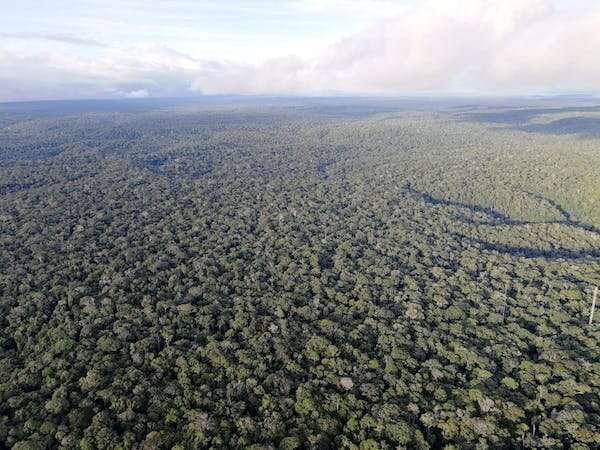This article has been reviewed according to Science X's editorial process and policies. Editors have highlighted the following attributes while ensuring the content's credibility:
fact-checked
trusted source
written by researcher(s)
proofread
Rainforests pump water round the tropics—but the pulse of this heart is weakening

Tropical forests are often referred to as the "lungs of the world", describing the way their trees exchange gases with the atmosphere. By "breathing in" carbon dioxide and "breathing out" oxygen during photosynthesis, tropical forests remove about 15% of man-made carbon emissions and help to slow climate change.
This is not the only way tropical forests influence the climate, however. Anyone who has walked through a woodland on a hot day will know that trees have an immediate cooling effect. As well as shading the ground, trees draw water up from the soil and release it through tiny holes in their leaves called stomata. By doing this, trees cool their environment the same way evaporating sweat cools our bodies.
By pumping water from the land into the air, tropical forests also function like a heart. Water sucked up by tree roots is pumped back into the atmosphere where it forms clouds which eventually release the water as rain to be reabsorbed by trees. This cycle can occur multiple times as air moves over large forests. In fact, it's critical to the survival of forests situated far from the ocean. In the Amazon and Congo river basins, somewhere between a quarter and a half of all rainfall comes from moisture pumped from the forest itself. This recycling of moisture helps to maintain the large amounts of rainfall tropical forests need.
Cutting down trees stops this transfer of water between the earth and the air and causes the surrounding area to heat up. People living near tropical forests are well aware of this effect, and scientists have since proved it using ground and satellite temperature measurements.
The world's heartbeat is slowing down
Scientists have long understood the theory linking deforestation and decreasing rainfall. Frustratingly, the evidence to prove it has been harder to pin down. Rainfall varies so much from year to year and between regions that it has been challenging to conclusively demonstrate the impact of deforestation.
In a recent study, we used satellite measurements to investigate whether rainfall patterns changed after tropical forests were cleared. By comparing the rainfall over deforested regions with that over neighbouring forest we were able to isolate the impacts of forest loss. We found rainfall reduced after deforestation across all tropical regions, including the Amazon, Congo and in Southeast Asia. As the area of cleared forest expanded, rainfall decreased by a larger amount.
Our work suggests that so much tropical forest has been cleared globally over the past two decades that the tropical forest heartbeat has started to slow, resulting in less rainfall in the surrounding regions. We estimate that if tropical forests continue to be cleared, rainfall could decrease by an additional 10% by 2100 over the most heavily deforested regions. If enough forests are cleared and rainfall declines too much, a tipping point could be reached where there is not enough rain to sustain the remaining forests.
How to value tropical forests
Tropical nations are tasked with conserving their forests at the same time as developing their economies. Conservation is often perceived as a trade-off, but the local and regional climate benefits of healthy forests can reduce heat stress, boost crop yields and maintain stable water flows to predictably generate hydroelectricity. It can make more economic sense to protect forests rather than clear them.
If deforestation of the Amazon continues unabated, reductions in rainfall would cut hydropower production in the region to 25% of its potential. Another recent study showed that reducing deforestation in the Amazon to sustain rainfall could prevent agricultural losses of US$1 billion annually.
As the crucial role of tropical forests in maintaining a cooler and wetter climate becomes better understood, the incentive to conserve them will grow.
Provided by The Conversation
This article is republished from The Conversation under a Creative Commons license. Read the original article.![]()



















